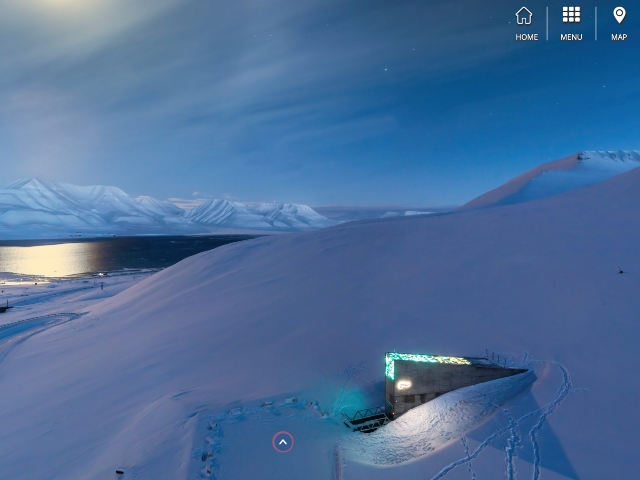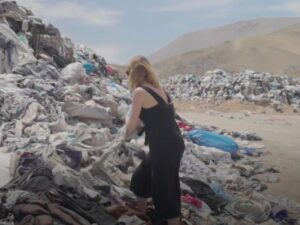[imagesource:virtualtourcompany]
More than 1,2 million seed samples from almost every country in the world are being preserved in a “doomsday seed vault” in the frigid Norwegian Arctic.
The grey wedge-shaped building that protrudes from a mountain on the remote island of Spitsbergen houses the precious collection, called the Svalbard Global Seed Vault.
The seeds are safely kept inside almost 400 feet of rock, steel, mirrors and prisms reflecting ghostly green lights, behind five metal doors, which are only opened a few times each year for new entries of seeds – the vault is typically only opened to a handful of people.
But in honour of its 15th anniversary, anybody is able to catch a rare glimpse of the vault’s interior through a virtual tour held on a special website.

It is referred to as the “doomsday seed vault” as it is meant to protect crop biodiversity in case of a localised catastrophe, notes Smithsonian Magazine:
“From here in Svalbard, the world looks different. This seed vault represents hope, unity and security,” says Stefan Schmitz, executive director of the Crop Trust, a co-manager of the vault, in a press release.
“In a world where the climate crisis, biodiversity loss, natural catastrophes and conflicts increasingly destabilize our food systems, it has never been more important to prioritize safeguarding these tiny seeds that hold so much potential to adapt our future food to such global threats.”
The doomsday vault effectively acts as backup storage for a global network of more than 1 700 smaller vaults called gene banks.

Countries deposit copies of the seeds they hold in their own banks, and the Svalbard facility keeps them safe:
The seeds remain the property of the depositing country, to be withdrawn in the event their own stockpile is compromised. In 2015, for example, seeds from the vault were used to restart the International Center for Agricultural Research in the Dry Areas after its Aleppo seed bank had to be abandoned during the Syrian civil war.
The floor-to-ceiling shelves with the space for thousands of seedboxes have been compared to “being in a cathedral” by Lise Lykke Steffensen, executive director of NordGen, the gene bank of the Nordic countries that handles the day-to-day operation of the vault:
“It has high ceilings and when you’re standing inside the mountain, there’s hardly any sound. All you can hear is yourself,” Steffensen says.
“When you open the door, it’s minus 18 degrees Celsius—the international standard for conserving seeds—which is very, very cold. Then you see all of the boxes with seeds from all of these countries. I’ve been so many times and I’m still curious.”
Meanwhile, those who run the vault say it’s an important symbol of cooperation and global community:
“The seeds don’t care that there are North Korean seeds and South Korean seeds in the same aisle,” Brian Lainoff, the former lead partnerships coordinator of the Crop Trust, told Time’s Jennifer Duggan in 2017. “They are cold and safe up there, and that’s all that really matters.”
The seed collection has only been growing since being established in 2008.
New seed deposits of wild strawberries, wheat, maize, and rice have joined the ranks of other preserved plants, including first-time depositors from Albania, Croatia, Benin, and North Macedonia.
The last Southeast European country recently deposited seeds from an Ajvarka red pepper variety used to make a popular traditional relish.
Take the virtual tour here.
[source:smithsonianmag]





